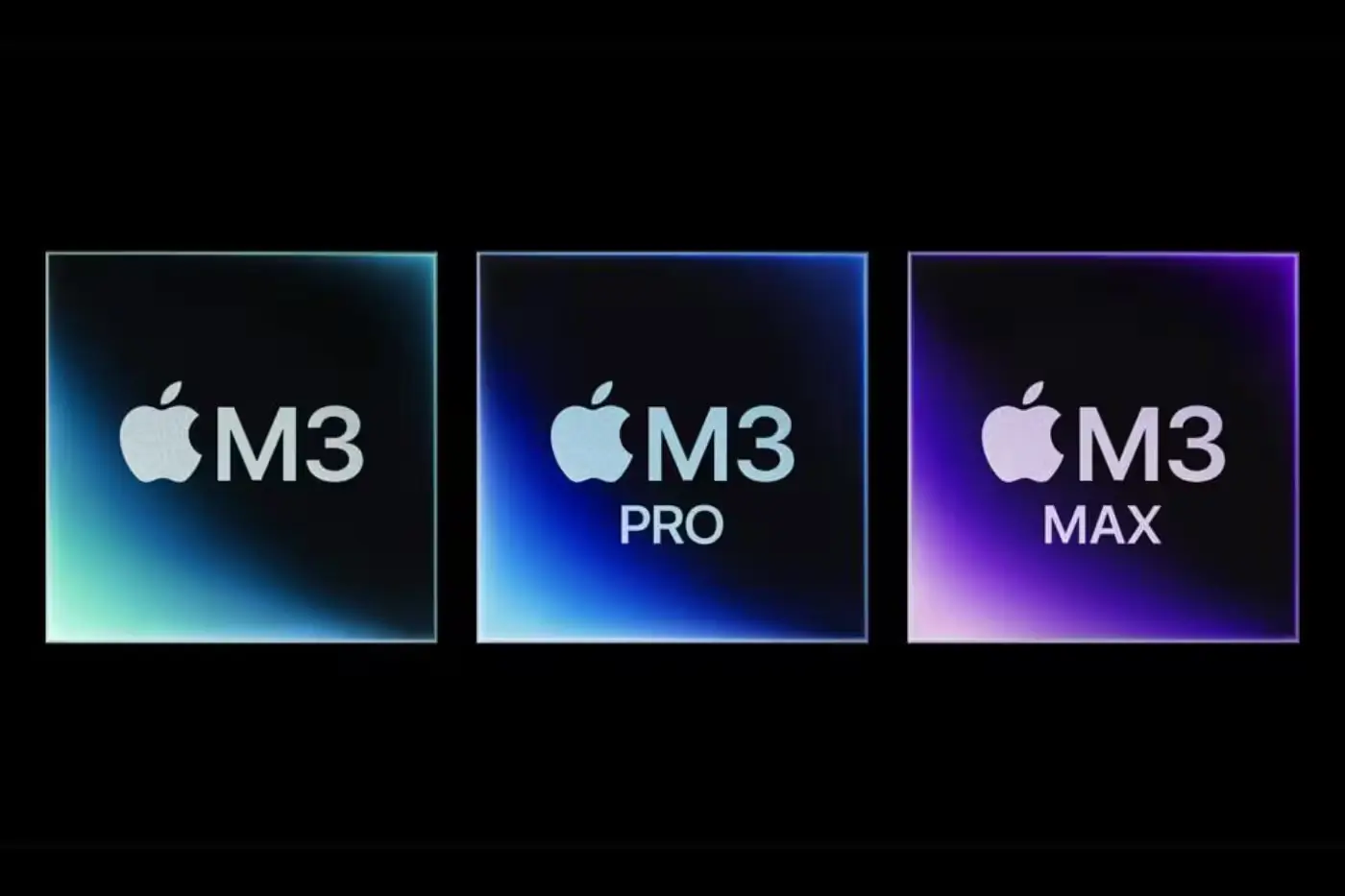Apple has long been a powerhouse in technology innovation, consistently pushing the envelope when it comes to chip design and performance. The latest leap forward is the introduction of the Apple M3 chip, a groundbreaking piece of technology that promises to redefine what we expect from personal computing.
This article takes an in-depth look at the M3 chip, exploring its architecture, performance enhancements, benefits, and practical applications.
The Evolution of Apple Silicon
To understand the significance of the M3 chip, it’s helpful to trace the evolution of Apple’s silicon journey. Apple transitioned from Intel processors to their own custom-designed M1 chip in 2020. The M1 marked a significant improvement in performance and efficiency, followed by the M1 Pro, M1 Max, and eventually the M2 chip.
Each iteration brought enhanced speed, improved graphical capabilities, and better energy efficiency. The M3 chip, however, represents a culmination of Apple’s advancements in chip design.
Architectural Advancements
The M3 chip is built on a 3-nanometer process, a significant improvement over the 5-nanometer process used in the M1 and M2 chips. This step down in size allows for more transistors to be packed into the chip, boosting performance and efficiency. Here are some of the standout features:
- Increased Transistor Count: The M3 chip boasts over 20 billion transistors, up from around 16 billion in the M1. This increase allows for more powerful and efficient processing.
- Integrated Neural Engine: The M3 chip includes an upgraded 16-core Neural Engine capable of performing 20 trillion operations per second. This enhances machine learning tasks, such as image and speech recognition, more efficiently.
- Unified Memory Architecture: Apple’s Unified Memory Architecture (UMA) continues to be a cornerstone of the M3 chip, allowing all components to access the same data without duplicating it, speeding up performance and saving power.
- Enhanced GPU: The M3 chip features a 14-core GPU, providing a significant boost in graphical performance, which is particularly beneficial for graphic-intensive applications like video editing and gaming.
- Improved Thermal Management: Apple has fine-tuned the thermal management in the M3, ensuring that the chip can maintain high performance without overheating, making it ideal for thin and light devices.
Performance Enhancements
The M3 chip represents a colossal leap in performance across several metrics:
- CPU Performance: The 8-core CPU (comprising 4 high-performance and 4 efficiency cores) offers up to 25% faster performance compared to the M2, making it one of the most powerful CPUs in personal computing.
- Battery Life: Thanks to the 3-nanometer process and optimized power efficiency, devices powered by the M3 can offer up to 20% longer battery life, catering to users who need all-day performance.
- Graphics Performance: The 14-core GPU delivers up to 30% faster graphics performance, which is invaluable for tasks such as 3D rendering, complex simulations, and high-fidelity gaming.
- Machine Learning: The enhanced Neural Engine ensures faster and more efficient machine learning capabilities, offering 15% better performance in tasks involving AI and ML models.
Benefits of the M3 Chip
The M3 chip brings a multitude of benefits aimed at elevating user experience across various applications:
- Enhanced Productivity: Professionals in fields like software development, graphic design, and content creation can expect dramatically faster compile times, smoother real-time editing, and more efficient multitasking.
- Improved Gaming Experience: Gamers will enjoy better frame rates and richer graphics, with less lag and smoother performance, thanks to the boosted GPU and lower latency.
- Exceptional Battery Life: For users on the go, the improved power efficiency translates to longer work hours without needing to recharge, perfect for traveling professionals and students.
- Advanced AI Capabilities: The significant improvements in machine learning performance enable more advanced applications in AI, from sophisticated image and video analysis to real-time language translation.
- Sustainability: Apple’s focus on power efficiency means the M3 chip is not only powerful but also more environmentally friendly, reducing the overall carbon footprint of their devices.
Practical Applications of the M3 Chip
Here are some practical ways users can leverage the capabilities of the M3 chip:
- Software Development: Developers can benefit from faster compile times and enhanced performance in virtual environments, making coding and testing more efficient.
- Video Editing: Professionals using software like Final Cut Pro or Adobe Premiere will notice faster rendering times and smoother playback of 4K and 8K video content.
- 3D Modeling and Rendering: Applications such as Blender and Maya will run more efficiently, significantly reducing the time needed for complex renders.
- Gaming: Titles requiring high graphical fidelity and complex computations, such as Cyberpunk 2077 and Call of Duty, will run more smoothly, providing a richer gaming experience.
- Everyday Use: For everyday tasks like browsing, streaming, and light photo editing, the M3 chip ensures that tasks are completed faster and with greater energy efficiency.
The introduction of the M3 chip marks a significant milestone in Apple’s silicon journey, reaffirming their commitment to innovation in personal computing. With a blend of unprecedented performance, energy efficiency, and advanced AI capabilities, the M3 chip is poised to lead the future of technology. As we look forward to seeing this chip in upcoming Apple devices, it’s clear that the M3 will set new benchmarks for what is possible in computing.
Whether you’re a professional, a gamer, or an everyday user, the M3 chip promises to elevate your computing experience to new heights. But don’t just take our word for it—let’s explore real-world scenarios where the M3 chip is set to make a profound impact.
Real-World Scenarios Enhanced by the M3 Chip
Scenario 1: Professional Content Creation
Emily is a video editor and VFX artist.
- Previous Setup: Emily’s typical workflow involved working on a high-performance desktop with multiple GPUs to handle 4K video editing, color grading, and adding complex visual effects.
- With the M3: Emily transitions to using a 16-inch MacBook Pro powered by the M3 chip. This mobile powerhouse not only keeps pace with her desktop setup but also offers the freedom to work from different locations. Thanks to the enhanced GPU and unified memory architecture, Emily can edit 4K footage seamlessly and render effects in a fraction of the time. Longer battery life means she can work untethered for extended periods, and improved thermal management ensures her laptop doesn’t overheat during intense editing sessions.
Scenario 2: Advanced Software Development
John is a full-stack software developer.
- Previous Setup: John used a powerful desktop PC for coding, compiling, and running multiple virtual machines and environments simultaneously.
- With the M3: He upgrades to an M3-powered MacBook Pro. The chip’s 8-core CPU handles intense multitasking effortlessly, allowing John to compile large codebases significantly faster. The 16-core Neural Engine accelerates any machine learning tasks integrated into his projects. Additionally, the streamlined efficiency of the M3 chip means that John’s MacBook provides all-day battery life, so he can code unplugged during long flights or while commuting.
Scenario 3: Immersive Gameplay
Mike is an avid gamer who enjoys graphically intensive and fast-paced games.
- Previous Setup: Mike relied on a high-end gaming PC with the latest GPU to enjoy games at maximum settings.
- With the M3: He switches to an M3-powered device that takes mobile gaming to a new level. The 14-core GPU ensures that Mike experiences smooth and immersive gameplay, even in graphically demanding titles. Enhanced thermal management keeps his device cool, even during long gaming sessions. Mike can now enjoy AAA games on the go without sacrificing performance, thanks to the exceptional capabilities of the M3 chip.
Scenario 4: Everyday Productivity
Sarah is a college student juggling various academic and extracurricular activities.
- Previous Setup: Sarah used a mid-range laptop that occasionally struggled with video calls, document editing, and media consumption.
- With the M3: She invests in an M3-powered MacBook Air. The superior CPU performance means she can seamlessly switch between writing essays, researching online, and attending virtual classes. The improved battery life allows her to go through a whole day of classes and study sessions without needing a charger. The Neural Engine’s machine learning capabilities even provide smarter writing assistance and real-time language translation, enhancing her overall efficiency and learning experience.
The Future of M3-Powered Devices
Beyond Laptops: While the M3 chip is a game-changer for laptops, its impact is set to extend to other Apple devices. The M3 chip’s architecture will likely enhance the performance of future iPads, providing a tablet experience that rivals or even surpasses many traditional laptops. Moreover, we could see the technology trickle down to devices like the iPhone, bringing desktop-class performance to smartphones.
Integration with macOS and iOS: Apple’s proprietary macOS and iOS are designed to work seamlessly with their silicon. The M3 chip’s capabilities will be fully leveraged by the latest software updates, offering new features, enhanced security, and more power-efficient operation. Users will experience faster software updates, improved multitasking, and new functionalities powered by the chip’s AI and machine learning prowess.
Sustainability and Innovation: Apple’s commitment to sustainability continues with the M3 chip. Enhanced energy efficiency means that devices run cooler and consume less power, contributing to longer device lifespans and reduced electronic waste. Moreover, as Apple continues to innovate, we can anticipate further breakthroughs in areas like virtual reality (VR), augmented reality (AR), and artificial intelligence, all powered by the versatile M3 chip.
Road Ahead
Apple’s M3 chip is not just another incremental upgrade; it’s a transformative leap in personal computing. Its advanced architecture, impressive performance metrics, and diverse practical applications make it a cornerstone of Apple’s future technology ecosystem. From creative professionals and developers to gamers and everyday users, the M3 chip offers significant enhancements that cater to a wide range of needs.
As the M3 chip becomes more integrated into Apple’s product lineup, its true potential will be realized. The innovations it brings will not only redefine what’s possible with personal computing but also set new standards for the industry as a whole. Whether you’re deep into content creation, developing cutting-edge software, gaming, or simply handling everyday tasks, the M3 chip is set to elevate your computing experience in ways previously unimaginable. Welcome to the future of computing, powered by Apple’s M3 chip.

